Archana Raghavan Sathyan and Sreeram Vishnu participated in the four-day interactive workshop on Qualitative Research. This Meeting Note discusses their experience, insights, and learnings from the workshop.
CONTEXT
Social scientists like us, always resort to quantitative research methods for our research purposes. But with the passage of time, we have started to appreciate the greater potential of qualitative research methods as a new and effective strategy for field data analysis. According to Murphy et al. (1998), qualitative research aims to provide us with a rich understanding of people’s lived experiences and perspectives, situated within the context of their particular circumstances and settings. The qualitative method is indeed a great tool in Social Sciences to explore social interactions, systems and processes. With this understanding, a workshop was organized with the objective of introducing the participants to key assumptions and practices underlying the use of qualitative research. Here participants were given a unique opportunity to study, practice, and reflect on different qualitative research methods and consider related components and challenges.
In 2017, Archana had an opportunity to attend the Qualitative Research Workshop (five days) at Ruhr University, Bochum, Germany, and she felt it would be informative and useful for her colleagues at Kerala Agricultural University (KAU). This motivated her to invite the same resource persons – Dr Raffael Beier, Research Group International Planning Studies, TU Dortmund University, Germany, and Dr Anne Siebert, Institute of Development Research and Development Policy, Ruhr University, Bochum, Germany – to conduct an online interactive workshop for the Social Science faculty of KAU. The workshop was organized during evening hours (6-9 pm) for four days, so as to ensure as well as facilitate the participation of staff without interrupting their working hours. The workshop was inaugurated by Dr A Anilkumar, Dean (Faculty of Agriculture), Kerala Agricultural University, Thrissur, Kerala. The key point he drew attention to was the need to include Qualitative Research in Social Sciences. He also reiterated that research agendas and seminars should also include, and promote, the mixed method of research for better policy considerations.
TECHNICAL SESSIONS
The technical sessions started with the resource persons who delivered content ranging from the basic research design to data transcription: key steps, sampling, preparing an interview and conducting an interview, recording and transcribing, along with the researcher’s role and ethical considerations. The sessions focussed on the following thematic areas:
Introduction: What is qualitative research?
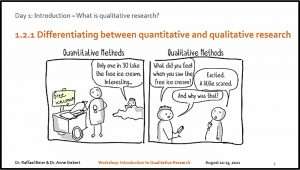 Figure 1. Differentiating between quantitative and qualitative research
Figure 1. Differentiating between quantitative and qualitative research
Dr Raffael Beier’s session concentrated on the difference between quantitative, qualitative, and mixed methods of research, underlying epistemologies, qualitative research interests and questions, and finally quality criteria. The speaker introduced the topic, qualitative research, with its directions and the objectives of analysis that examines, describes and contextualises a variety of phenomena in the social world. Moreover, it allows the researcher to get to the internal experience of participants, to determine how meanings are being formed through and in culture, and to ‘discover’ rather than test variables. As in the case of quantitative research, qualitative research also follows the same steps, that is research topic selection, research questions, theoretical framework, assumptions, then data collection, data analysis, and results write up. The discussion was on the difference between qualitative and quantitative research methods. The purpose of the qualitative research methods is to orient towards the explanatory, exploratory, and descriptive through inductive and deductive approaches. The deductive approach concentrates on building up on existing knowledge, helps by embedding research question in to the theoretical framework, and it is used to deduce theory-guided hypothesis while the inductive approach focuses on empirical observations as typical starting points and these observations are then used to induce general principles.
Then the discussion turned to quality criteria in qualitative research. Generalizability will be very difficult in case qualitative research, as its main value, relies on the particular description and exploration of a specific case which has a specific human value. Nevertheless, reliability can be added to data collection, data processing, and data analysis.
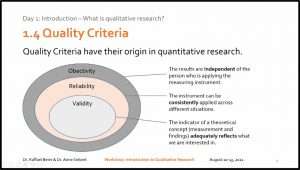 Figure 2. Quality criteria to taken care of while conducting qualitative research
Figure 2. Quality criteria to taken care of while conducting qualitative research
Validity is the truthfulness or credibility of the findings, and it means the extent to which results accurately represent the social phenomena which it refers to. The discussion centred on checking validity using triangulation of different data sources (video, audio and fieldnotes), by member checking, rich description, and by clarifying the bias of the researcher.
In qualitative research, framing of research questions demands special attention and one central question should be framed first, and this can be followed by preliminary sub-questions. The speaker suggests that beginning the research question with ‘what’ or ‘how’ conveys an open and emerging design. Furthermore, it is advisable to focus on a single concept or phenomenon, for example, the perception of elderly people on their situation and life in the retirement home. This could be framed as a research question as follows:
‘How do elderly people living in a retirement home perceive their situation, and how are they dealing with it?’
Different types of interviews and data transcription
The session focussed on an overview of data collection methods and different types of interviews, such as semi-structured interviews, narrative interviews, expert interviews, and focus group discussions. The discussion was on qualitative toolbox with a wide variety of tools, mainly documents, discourses, observations, and interviews.
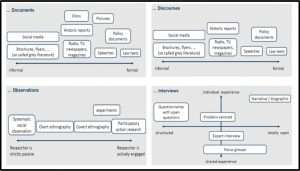 Figure 3. Overview of a qualitative tool box
Figure 3. Overview of a qualitative tool box
This was a very informative session that focussed on points to be dealt with while conducting focus group discussions. People are informally interviewed in a group discussion setting with at least 4-12 people who discuss a topic for 90 minutes maximum while a moderator facilitates a free open discussion. Diverse ideas and group dynamics may be utilised which are not present in interviews. The main focus topics were problems and solutions, personal behaviour and experiences, a new product or approach. Preparation of a focus group guide, careful selection of the team and participants, and other logistical considerations were discussed.
There are different types of interview methods: unstructured interviews, semi-structured interviews, and structured interviews. Qualitative interviews are considered to be a useful tool to answer research questions that are relatively understudied, and/or situated in a complex context which requires detailed analysis from various perspectives. Moreover, a researcher needs to address the issues on different models of reality i.e., a constructionist, positivist, and emotionalist point of view.
The sampling in quantitative research aims at representativeness, while in qualitative research it aims at accessing the widest range of insights possible given the limits of the research question. The main sampling methods involve purposive sampling, snowball sampling, maximum variation sampling, and typical case sampling. The next important point discussed during the workshop was on sample size which is very hard to define in qualitative research. Dr Siebert stressed that observations should not be restricted to a specific context or time since human behaviour is likely to vary. Factors determining the sample size include data saturation, theoretical underpinnings of the research heterogeneity of the population from which the sample is drawn, and the research question.
Researcher’s role and ethical consideration
The next discussion was on the researcher’s role and ethical considerations – mainly on researcher’s background and biography, access to the target group, and ethical issues emerging from the research question or design.
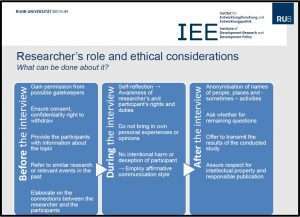 Figure 4. Researcher’s role and ethical considerations in qualitative research
Figure 4. Researcher’s role and ethical considerations in qualitative research
The discussion moved on to preparing and conducting interviews, and points to be taken care of while conducting interviews. The interviewer should take control over the interview by smoothly transiting between major topics, sticking to questions, preparing for possible questions from the participant, paying attention to time, use of catchwords and memory hooks, remaining calm and attentive while handling supportive devices. Encouraging responses by conveying full attention from the researcher, integrating moments of silence, repeating what has been said, and paraphrasing will add quality to the content of the interview.
Practical task and homework: Conduct, record, and transcribe a short interview
The workshop also concentrated on a practical task and homework: ‘conduct, record, and transcribe a short interview’. Participants were assigned the task of conducting an interview, transcribing it and sending it to the resource persons, which turned into a very interesting task for all. Resource persons took great effort to analyse and critically comment on transcripts and audio files sent by the participants.
It was also interesting to know about short introduction to MaxQDA software. Then there was a brief discussion on how to code the transcripts in MaxQDA software. Coding of transcripts follows a step-by-step procedure. The first step is gaining an overall impression of the content and possible similarities and differences, noting peculiarities such as repetitions, surprises or particular emphasises, then making a note of it. Codes are a content-related element that appear relevant to the research question and need to be labelled with a short but accurate caption.
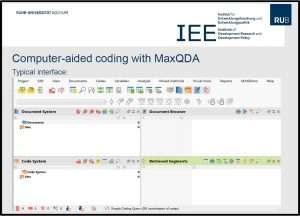 Figure 5: Computer aided coding and data analysis in qualitative research
Figure 5: Computer aided coding and data analysis in qualitative research
Following the software learning, how to report results from a qualitative study was also learnt in the process. Participants were cautioned to take care and present the data in its rawest possible state because it is close to reality. The main tasks involved in reporting are describing, comparing, categorising, conceptualising, and interpreting in the context of theory. While writing it up, it was suggested that quotes be used together with the author’s interpretations, and then describe the outcomes pertinent to the theory and general literature on the topic, presenting the text in different and creative ways, for instance in tabular forms and process model.
KEY TAKEAWAYS FROM THE WORKSHOP
- Theoretical tenets and methodological overview of qualitative research;
- Practical understanding on how to conduct qualitative interviews;
- Coding and use of software in qualitative data analysis.
OUR IMPRESSIONS
All the participants acquired foundational knowledge and experience on how to begin evaluating, selecting, and defending appropriate qualitative methods for their own future research projects. The workshop combined both lectures and interactive elements, i.e., practical learning for achieving its objective, which was a new experience for the participants. Importantly, all the workshop sessions were meticulously planned and implemented by the resource persons which helped all the participants to enjoy and engage effectively in all the sessions.
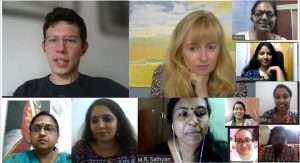
RECOMMENDED BOOKS
Bryman A. 2016. Social research methods. Oxford: Oxford University Press.
Creswell JW and Creswell JD. 2017. Research design. Qualitative, quantitative and mixed methods approaches. Thousand Oaks: Sage Publications.
Hennink M, Hutter I and Bailey A. 2020. Qualitative research methods. Thousand Oaks: Sage Publications.
Neuman WL. 2011. Social research methods. Qualitative and quantitative approaches. Boston: Pearson.
Additional reading material can be recommended upon request.
Acknowledgements:
We acknowledge the contributions of Dr. Raffael Beier (Research Group International Planning Studies, TU Dortmund University, Germany) and Dr. Anne Siebert (Institute of Development Research and development Policy, Ruhr-University Bochum, Germany) in organising this workshop.
 Dr Archana Raghavan Sathyan, Assistant Professor, Department of Agricultural Extension, College of Agriculture, Vellayani, Thiruvananthapuram 695522. email: archana.rs@kau.in
Dr Archana Raghavan Sathyan, Assistant Professor, Department of Agricultural Extension, College of Agriculture, Vellayani, Thiruvananthapuram 695522. email: archana.rs@kau.in
 Dr Sreeram Vishnu, Assistant Professor (Agricultural Extension), Regional Agricultural Research Station, Ambalavayal, Wayanad, Kerala 673593. email : sreeram.vishnu@kau.in
Dr Sreeram Vishnu, Assistant Professor (Agricultural Extension), Regional Agricultural Research Station, Ambalavayal, Wayanad, Kerala 673593. email : sreeram.vishnu@kau.in

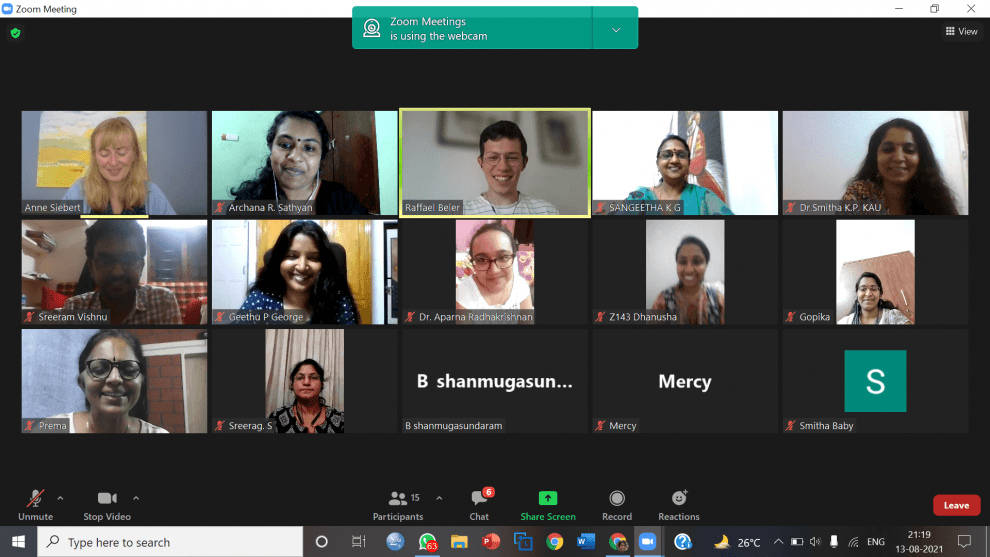

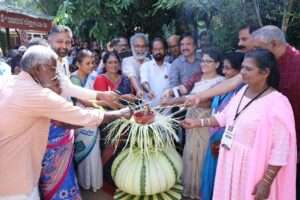

Add Comment